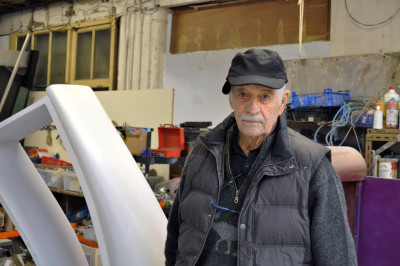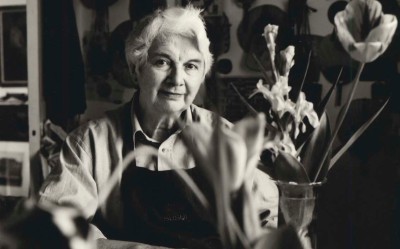In memoriam: Chris Wilkinson RA
In memoriam: Chris Wilkinson RA
By Nicholas Grimshaw PPRA
Published 20 April 2022
Nicholas Grimshaw PPRA pays tribute to the architect’s innovative designs for visitor attractions, as well as his great service to the Royal Academy.
-
I didn’t really know Chris Wilkinson until he was elected a Member of the Royal Academy in 2006, which was during my seven-year presidency of the RA. I had always thought of him and his practice with Jim Eyre as being engineering-based with strong artistic leanings. We got closer over the years and he, like me, had enormous affection for the Academy and the camaraderie that it brought with it. In due course, he and his wife Diana invited me and my wife Lavinia for the weekend to his remote and very precisely reconstructed house outside Lucca in Tuscany.
On a walk up the mountainside from there, he enthused to me about his new project to create a Mary Rose Museum in Portsmouth, which would house the hull of the ship raised from the Solent. The museum is now built, opening in 2013. He described his concept of dividing the famous Tudor warship longitudinally and replicating all the objects found in it on one side or the other – so if he had the remains of a seaman’s chest on the one side, he would show a replica of this on the other side. Chris grew more and more passionate about this as we walked. By the time we got back to our starting point, he was reliving the life of a seaman in the 16th century to the full. I thought this showed great sensitivity to the muddy hulk that had been retrieved near Portsmouth Harbour, and a very good illustration of his response to architecture.
-

The Mary Rose Museum, Portsmouth, 2013, by WilkinsonEyre
©Richard Chivers
-
The scheme combined delicate conservation with technical expertise and a rather poetic approach to capture the public’s imagination, such as the stained black exterior that references traditional English boat sheds. He was able to weave similar storytelling into a series of visitor destinations. Explore@Bristol turned a railway shed into a science exploration centre, while the Liverpool Arena and Convention Centre on the Mersey bank blended into its historic setting next to the Albert Dock. Meanwhile, the Maggie’s Centre in Oxford sat like a treehouse in the woods, exemplifying WilkinsonEyre’s lightness – something which was true of Chris, too.
Then there was the Magna, a science adventure centre in a redundant Rotherham steelworks, which pipped us to the post for the Stirling Prize in 2001. To be honest, we were all bitterly disappointed at Grimshaw Architects, as the Eden Project, which the Magna was standing against, had got quite a reputation by that time. The announcement was made at a big dinner in the newly refurbished British Museum, and when I went across to congratulate Chris he said, in his slow and deliberate way, thanks very much but the Eden Project should have won. I thought this showed a generosity of spirit, which later on became evident in a lot of his work and his life in general.
He became popular at the Academy for his combination of art and technology, which seemed to permeate all his work, and he came to love the RA as much as all of us. Eventually, he became Chair of the Client Committee and later Treasurer – both difficult jobs, which he did brilliantly. As Chair of the Client Committee, he gave David Chipperfield RA his basic brief to redevelop the Academy in time for its 250th birthday in 2018 – the renewal of the RA Schools is still underway and promises to be magnificent. Managing the finances of organisations and building projects is always a challenging scenario, and one to which Chris devoted so much of his life. It was this tenacity, along with remarkable creativity, which meant Chris was able to have a profound impact on architecture and conceive such a breadth of stunning projects. We shall all miss him, but his legacy remains.
Nicholas Grimshaw is an architect. He was President of the RA, 2004-11.




